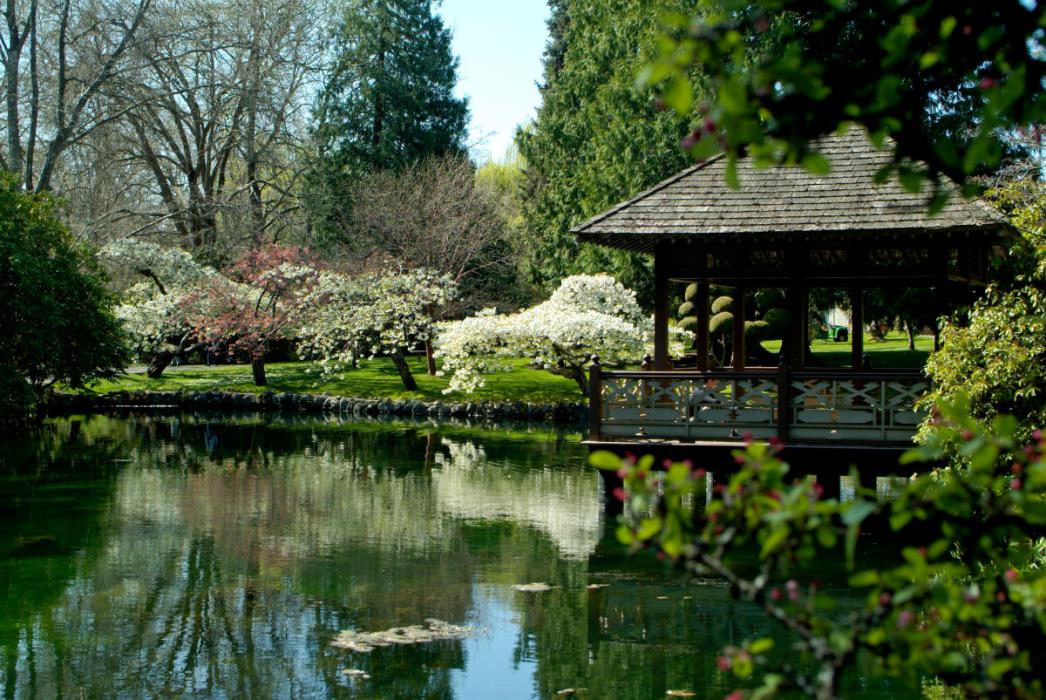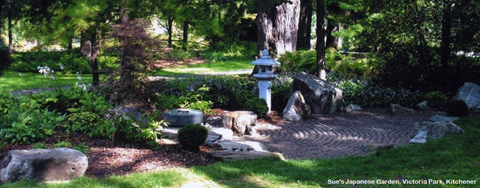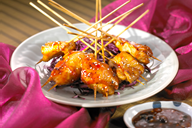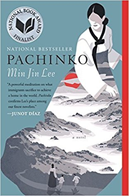
On this last day of Asian Heritage Month, we bring you the final installment of our newsletter series. Thank you for joining us each week to learn more about Asian-Canadian history, cultural influences, global impacts, and of course ... the Library!
In the spirit of ‘think globally, act locally,’ we encourage you to take what you’ve learned and use it to make our University of Waterloo community a safer and more inclusive space for all. Speak up against anti-Asian hate, watch a film that casts Asian actors in strong character roles, choose to buy products from companies that use ethical and sustainable manufacturing practices, or better yet ... support a local Asian-owned business!
Learn more about Asian Heritage Month activities at University of Waterloo, Human Rights, Equity and Inclusion’s Anti-racism resources, and Waterloo's Counselling Services.
Keep an eye out for more library newsletters in June, celebrating Indigenous Peoples and Pride Month! Subscribe to library newsletters now.
The local Waterloo community
We don’t have to go far from home to see and experience Asian discrimination. Right here, in the hometown of the University of Waterloo, Kitchener-Waterloo is also the home of many Asian ethnicities.
With 48.5% of international students coming from China, the Asian community in Kitchener-Waterloo is partly due to the increasing number of international students.
While the Asian community increases, Kitchener residents work hard to raise awareness of anti-Asian racism.
Published on March 18, 2021, CTV news captures resident Jannell Lo using digital platforms to launch the ‘Dump the Hate’ fundraiser. Donations will go to organizations that support the Asian community.
“There are racist comments and slurs being said, mainly in downtown Kitchener. I don’t think it’s being talked about within the region,” she said. “That’s why I wanted to raise awareness with my campaign.”
As a reader, perhaps you are not in Kitchener-Waterloo and believe this story does not pertain to you. However, we are sure you don’t have to go far to experience or see Asian hate. Our brains are muscles that keep things out. With many stimuli trying to gain our attention, we ignore the things that are not pertinent to us and our current goals. As an individual part of a community, it is up to us to open our minds to see the inequality that exists.
More local resources
The Kitchener-Waterloo Multicultural Centre has a mandate to support and assist the ethno-cultural and newcomer community in Kitchener-Waterloo through a broad range of programs and services. The Centre assists groups in the community with organizing and undertaking cultural activities, including the K-W Multicultural Festival.
The Waterloo Region Chinese Canadian Association is a registered non-profit organization that supports and celebrates Chinese Canadians in the Waterloo Region. Check their Facebook page often for online events!
The India-Canada Association Waterloo Region is a non-profit organization that fosters a sense of togetherness and belonging by encouraging and promoting local talent in Waterloo Region. Events are currently on hold due to pandemic closures, follow their Facebook page for updates.
Waterloo Region Japanese Canadian Community Association acts as a support group for Japanese family members but also to nurture Japanese language and culture to the children of a multi-racial background and others who might be interested in Japanese culture.
Puzzle
 Japanese gardens puzzle: A Japanese immigrant and professional gardener, Isaburo Kishida, designed four gardens around Victoria. This one is the Japanese Garden at Hatley Park National Historic Site created in 1909.
Japanese gardens puzzle: A Japanese immigrant and professional gardener, Isaburo Kishida, designed four gardens around Victoria. This one is the Japanese Garden at Hatley Park National Historic Site created in 1909.
Image used under fair dealing: https://hatleypark.ca/hatley-park-gardens/japanese-gardens
Fun fact
 Sue’s Japanese Garden was initiated by a generous endowment from Itsue (Sue) Callfas, who passed away in 2002. Sue was an enthusiastic supporter of the Waterloo Region Japanese Canadian Community Association. With permission and support from the City of Kitchener, a Japanese style garden was built in Victoria Park, designed by T. Torizuka. The kanji character, which means “harmony,” and the words “Sue’s Japanese Garden” have been carved onto the stone in the garden.
Sue’s Japanese Garden was initiated by a generous endowment from Itsue (Sue) Callfas, who passed away in 2002. Sue was an enthusiastic supporter of the Waterloo Region Japanese Canadian Community Association. With permission and support from the City of Kitchener, a Japanese style garden was built in Victoria Park, designed by T. Torizuka. The kanji character, which means “harmony,” and the words “Sue’s Japanese Garden” have been carved onto the stone in the garden.
Support local Asian-owned businesses
Gayuma Catering: Gayuma is a Filipino word meaning love charms and potions, which is exactly what this Waterloo-based catering company provides. By creating Asian fusion cuisine using the finest natural ingredients, Katrina and Jinny are able to share their love of food with others. The aromatic, vibrant foods they make are innovative, delicious, and healthy. You can check them out on Instagram @gayuma.catering.
Recipes
 Enjoy this simple but very tasty Five-Flavor Grilled Chicken from Chef Yan, an international food ambassador, who has a strong passion for Chinese cooking. After a small appearance on a Canadian daytime news show, Chef Yan went on to host his own and extremely popular cooking show, the Yan Can Cook Show.
Enjoy this simple but very tasty Five-Flavor Grilled Chicken from Chef Yan, an international food ambassador, who has a strong passion for Chinese cooking. After a small appearance on a Canadian daytime news show, Chef Yan went on to host his own and extremely popular cooking show, the Yan Can Cook Show.
Recommended reads
 Pachinko by Min Jin Lee is set “in the early 1900s. Teen-aged Sunja, the adored daughter of a crippled fisherman, falls for a wealthy stranger at the seashore near her home in Korea. He promises her the world, but when she discovers she is pregnant — and that her lover is married — she refuses to be bought. Instead, she accepts an offer of marriage from a gentle, sickly minister passing through on his way to Japan. But her decision to abandon her home, and to reject her son’s powerful father, sets off a dramatic saga that will echo down through the generations.” — Provided by publisher. Request this title from another library!
Pachinko by Min Jin Lee is set “in the early 1900s. Teen-aged Sunja, the adored daughter of a crippled fisherman, falls for a wealthy stranger at the seashore near her home in Korea. He promises her the world, but when she discovers she is pregnant — and that her lover is married — she refuses to be bought. Instead, she accepts an offer of marriage from a gentle, sickly minister passing through on his way to Japan. But her decision to abandon her home, and to reject her son’s powerful father, sets off a dramatic saga that will echo down through the generations.” — Provided by publisher. Request this title from another library!
Film fun
 Bride & Prejudice is “a Bollywood update of Jane Austen’s classic tale, in which Mrs. Bakshi is eager to find suitable husbands for her four unmarried daughters. When the rich single gentlemen Balraj and Darcy come to visit, the Bakshis have high hopes, though circumstance and boorish opinions threaten to get in the way of romance.”
Bride & Prejudice is “a Bollywood update of Jane Austen’s classic tale, in which Mrs. Bakshi is eager to find suitable husbands for her four unmarried daughters. When the rich single gentlemen Balraj and Darcy come to visit, the Bakshis have high hopes, though circumstance and boorish opinions threaten to get in the way of romance.”
Make sure you’re connected to the proxy through Get access from anywhere before viewing the film at Criterion-on-Demand.
Wellness
 Traditional cupping is widely used in many different Asian countries. Although the origin is debated, it has been used in China for thousands of years. The flow of energy through our body and the world is known as Qi in Chinese culture. Their belief is that when the flow of qi is impacted, there are imbalances in other parts of one’s life, ultimately impacting the harmony between Yin and Yang forces. Therefore, Chinese fire cupping is meant to decrease the Yang forces at play. The contemporary explanation suggests that cupping can draw toxins out to increase blood flow. Ancient techniques use fire and glass jars to create suction, however, modern plastic suction pumps are commonly used.
Traditional cupping is widely used in many different Asian countries. Although the origin is debated, it has been used in China for thousands of years. The flow of energy through our body and the world is known as Qi in Chinese culture. Their belief is that when the flow of qi is impacted, there are imbalances in other parts of one’s life, ultimately impacting the harmony between Yin and Yang forces. Therefore, Chinese fire cupping is meant to decrease the Yang forces at play. The contemporary explanation suggests that cupping can draw toxins out to increase blood flow. Ancient techniques use fire and glass jars to create suction, however, modern plastic suction pumps are commonly used.
Like other aspects of Asian culture and traditions, the West has adopted a similar practice going so far as to sometimes change the method itself. The 2016 Olympics in Rio showcased many athletes sporting the circular bruises left on the body, and an abundance of articles were published to explain what these were to those unfamiliar with the practice. If you’re interested in learning more, you can also look at this study which looked at the effectiveness of using cupping on neck and shoulder pain.
Read: issue one, issue two, issue three, issue four. Subscribe to library newsletters.




